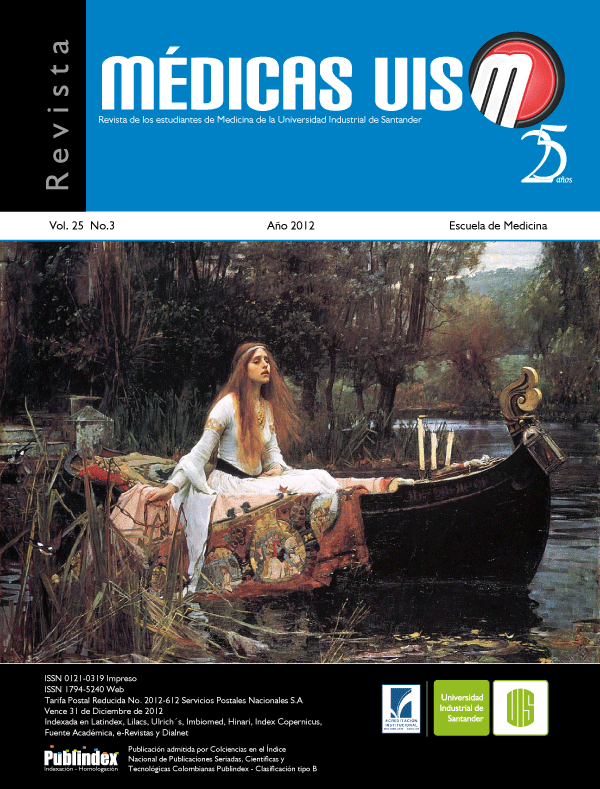Abstract
Introduction: child hemiplegia phenomenon is commonly caused by hypoxia-ischemia or cerebral hemorrhages. Particularly, brain hemorrhages produce intracranial hypertension, which generates deficit in the regulation mechanisms of the intra cerebral blood flow. This deficit causes cerebral edema and ischemia in addition to the clinical chart that develops a mass phenomenon by pressure, which displaces the brain tissue. Objective: to demonstrate that an adequate physical intervention and parents’ responsibility about their son neurological improvement increases the benefits of the treatment. Clinical case: a case of a nine-month-old male patient, with mixed hemiplegia on the right side, caused by bleeding in the basal ganglia. After seven months of physiotherapy, the patient starts independent walking. Conclusion: it is pertinent to establish the characteristics of this clinical outcome, shows the adequate rehabilitation as the best and main therapeutic option. Besides, a satisfactory evolution produces improvement in life quality of the patient and his family. (MÉD.UIS.2012;25(3):245-50).
References
2. Rodríguez I, Castellanos G, Rodríguez G. Eficacia de la aplicación del programa de rehabilitación física aplicado en la clínica de neuropediatría para la disminución de la espasticidad y el aumento de la capacidad motora en niños con parálisis cerebral. Centro Internacional de Restauración Neurológica, Revista Digital. 2003;9(67)
3. Villareal E. Estimulación Temprana en Niños Nacidos de Madres con Alto Riesgo Obstétrico y Perinatal del Hospital Bertha Calderón, realizada en el Hospital Aldo Chavarría, del 2000 al 2002 en Managua. Universidad Nacional Autónoma de Nicaragua Managua – Monografías para Optar por Títulos de Especialista. 2003.
4. Jegat C, Barray V, Morel V, Mauduyt de la Grève I, Le Metayer, Et Lacert Ph. Rééducation des infirmes moteurs cérébraux. – Encycl. Méd. Chir. (Elsevier, Paris-France), Kinésithérapie. Médecine physique. Réadaptation. 1995;(26):28 .
5. Colver AF, Gibson M, Hey EN, Jarvis SN, Mackie PC, Richmond S. Increasing rates of cerebral palsy across the severity spectrum in north-east England 1964-1993. The North of England Collaborative Cerebral Palsy Survey. Arch Dis Child Fetal Neonatal Ed. 2000;83(1):F7-12.
6. Li S, Hong SX, Wang TM, Liu HL, Zhao FL, Lin Q. Premature, low birth weight, small for gestational age and childhood cerebral palsy. Zhonghua Er Ke Za Zhi. 2003;41(5):344-7.
7. Dolk H, Pattenden S, Johnson A. Cerebral palsy, low birth weight and socio-economic deprivation: inequalities in a major cause of childhood disability. Paediatr Perinat Epidemiol. 2001;15(4):359-63.
8. Romero DM. Impact of cerebral palsy in patients discharged from neonatal intensive care units. Minerva Pediatr. 2006;58(2):101-7.
9. Padovani R, Tognetti F, Landadio S, Bernardi B. Arterio-venous malformations of the spinal cord in the pediatric age group: a case report and review of the literature. Spine. 1986;11:23-5.
10. Flett PJ, Baulderstone D, Russo R, Davies RP. Spinal arteriovenous malformation presenting as spastic monoplegic cerebral palsy in a child. J Paediatr Child Health. 2012;48:71-4.
11. Scherzer A. Early Diagnosis and Interventional Therapy in Cerebral Palsy: An interdisciplinary Age-Focus Approach. 3 ed. Informa Healthcare; 2000.
12. Slominsky A. Winthrop Phelps and the Children’s Rehabilitation Institute. Management of the Motor Disorders of Children with Cerebral Palsy. Cambridge University Press; 1984.
13. Otoya MC. Parálisis Cerebral o Parálisis de Vida. Publicación Agencia AUPEC; 1998.
14. Moreno J. Técnicas Fisioterápicas en Hemiplejía. Rev. Hospital San Agustín Áviles – Universidad de Oviedo. 2007.
15. Fullerton HJ, Wu YW, Sidney S, Johnston SC. Recurrent hemorrhagic stroke in children: a population-based cohort study. Stroke. 2007;38(10):2658-62.
16. Ramón. ACV Hemorrágico. Facultad de Medicina Universidad Nacional de Tucuman Circular. 2005.
17. Ramón. ACV Hemorrágico. Facultad de Medicina Universidad Nacional de Tucuman Circular. 2005.
18. Wajskopff S, Hernández P. Pautas de Indicación Quirúrgica en los hematomas de Ganglios Basales. Revisión y puesta al día. Rev Médica Uruguay. 2001;17:140-6.
19. Láinez JM, Pareja A, Leira R, Martí-Fábregas J, Castillo J. Guía de actuación clínica en la hemorragia intracerebral. En: Díez E, editor. Guía para el Diagnóstico y Tratamiento del Ictus. Grupo de Estudio de Enfermedades Cerebrovasculares de la SEN. Barcelona: Prous Science; 2006. p. 185-213.
20. Tecklin JS. Pediatric Physical Therapy. Philadelphia: Lippincott Williams & Wilkins; 1998. p. 107.
21. Shore R. Rethinking the Brain. New Insights into Early Development. New York: families and Work Institute. 1997.
22. Vizuete M. Bioquímica Molecular del Desarrollo del Sistema Nervioso Central. En: Ed. Universidad Pablo de Olavide-Universidad de Sevilla, Neuropsicología Infantil. 2012.
23. Vizuete M. Bioquímica de la Plasticidad Sináptica. En: Ed. Universidad Pablo de Olavida-Universidad de Sevilla, Neuropsicología Infantil. 2012.
24. Bobath B. Actividad postural refleja anormal causada por lesiones. 3 ed. Panamericana; 1987. p. 97.
25. Gessel A, Amatruda C. Diagnóstico del desarrollo normal y anormal del niño: evaluación y manejo del desarrollo normal y anormal del niño pequeño y el prescolar. 2 ed. Paidós; 1989. p. 419-40.
26. Levitt S. Tratamiento de la Parálisis Cerebral y del Retraso Motor. 3 ed. Editorial Médica Panamericana; 2002. p. 39.
27. Kase K. Kinesio Taping Method. En: Kinesio [en línea], junio de 2010. [Citado 24 de Mayo de 2012]. Disponible en: http://www.kinesiotaping.com/global/corporation/about/kinesio-taping method.html
28. Bobath K. Base neurofisiológica para el tratamiento de la parálisis cerebral. 2 ed. Panamericana: 1982. p. 133.
29. Palisano R, Rosenbaun P, Walter S, Russell D, Word E, Galuppi B. Gross Motor function Classification System. Dev Med Chile Neurol. 1997;39:214-33.
